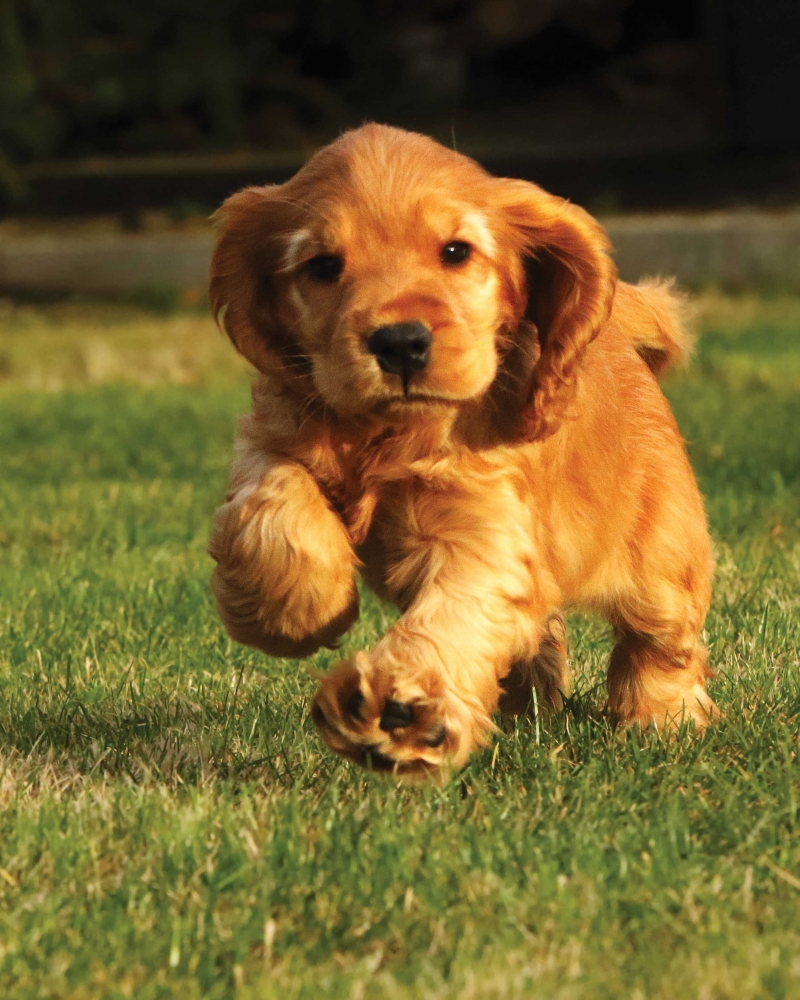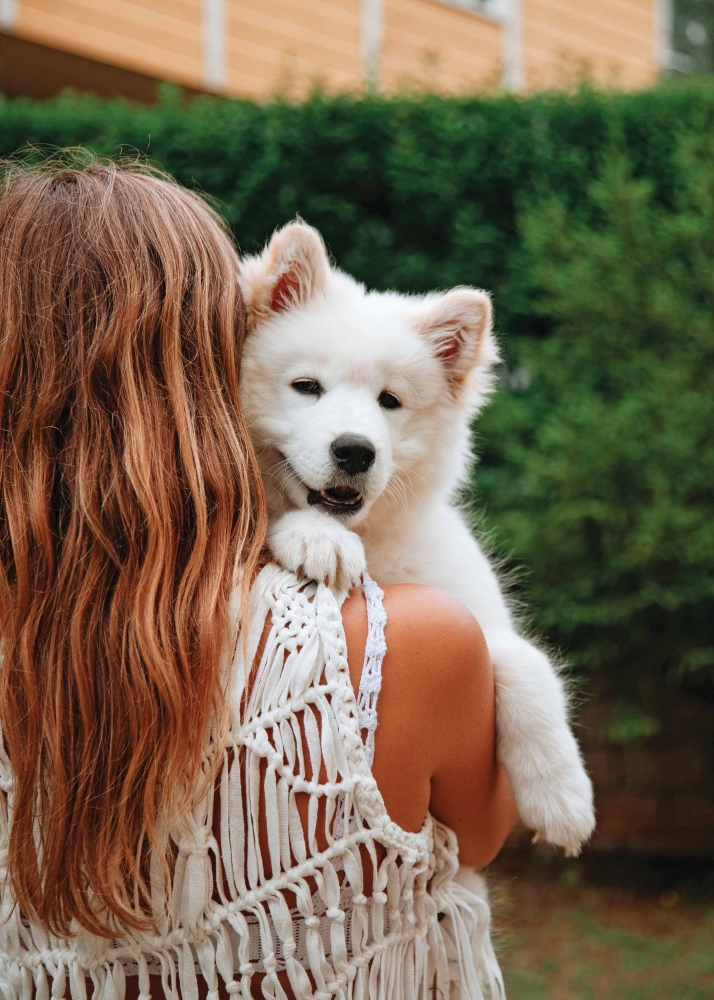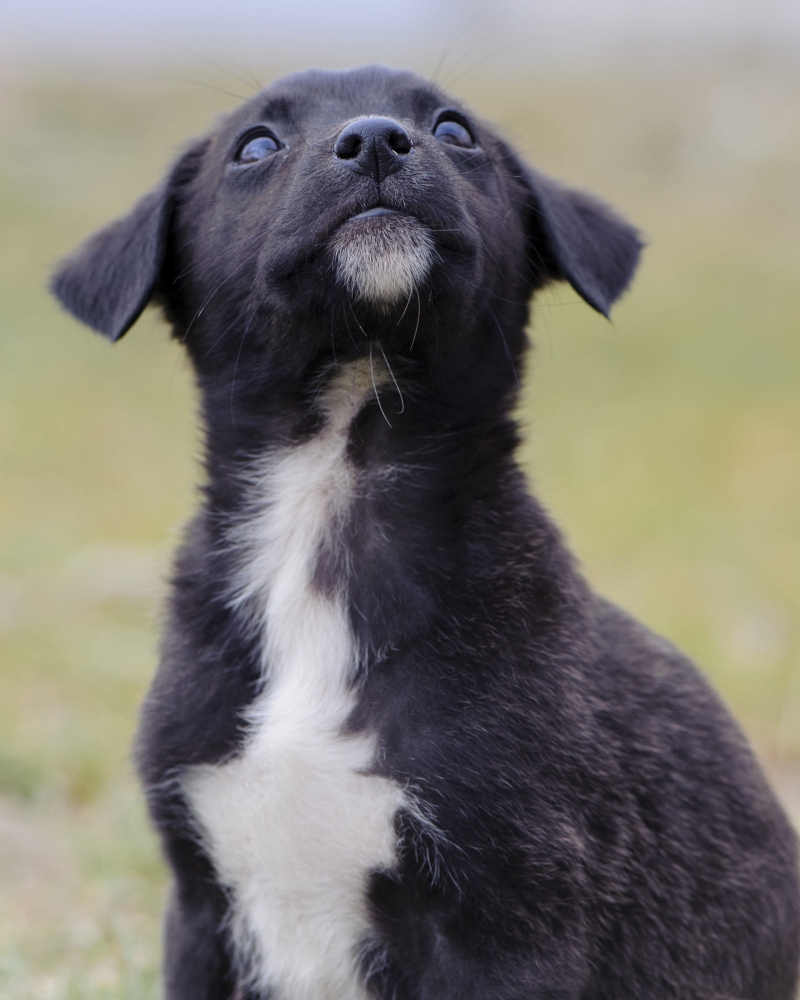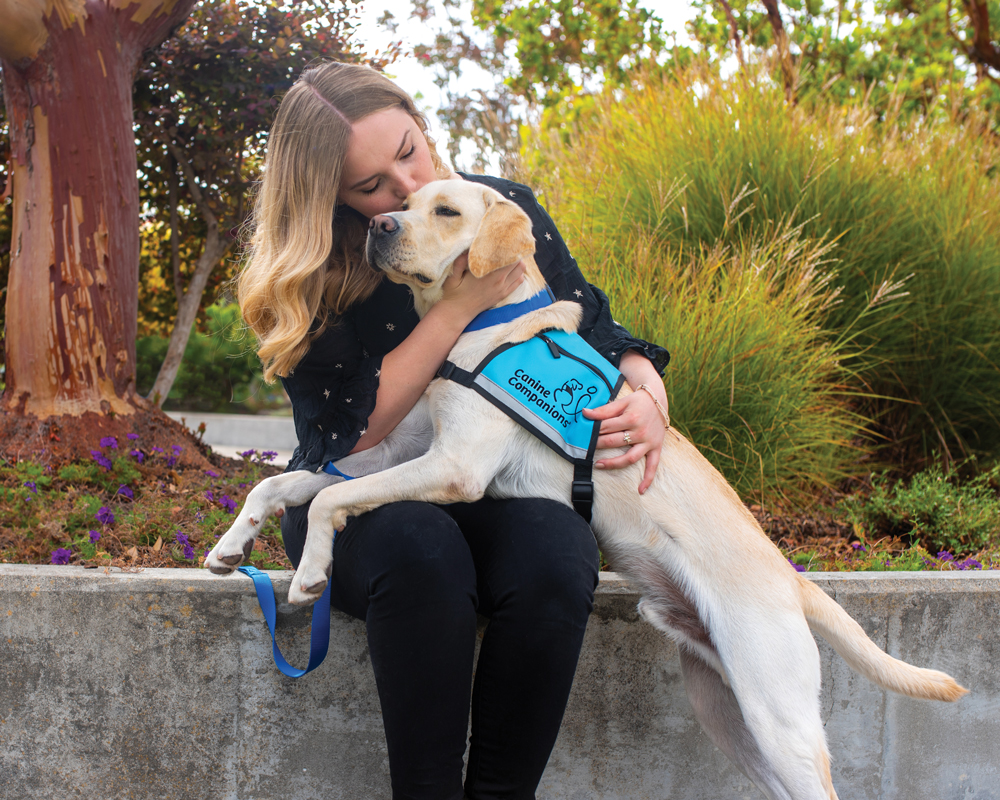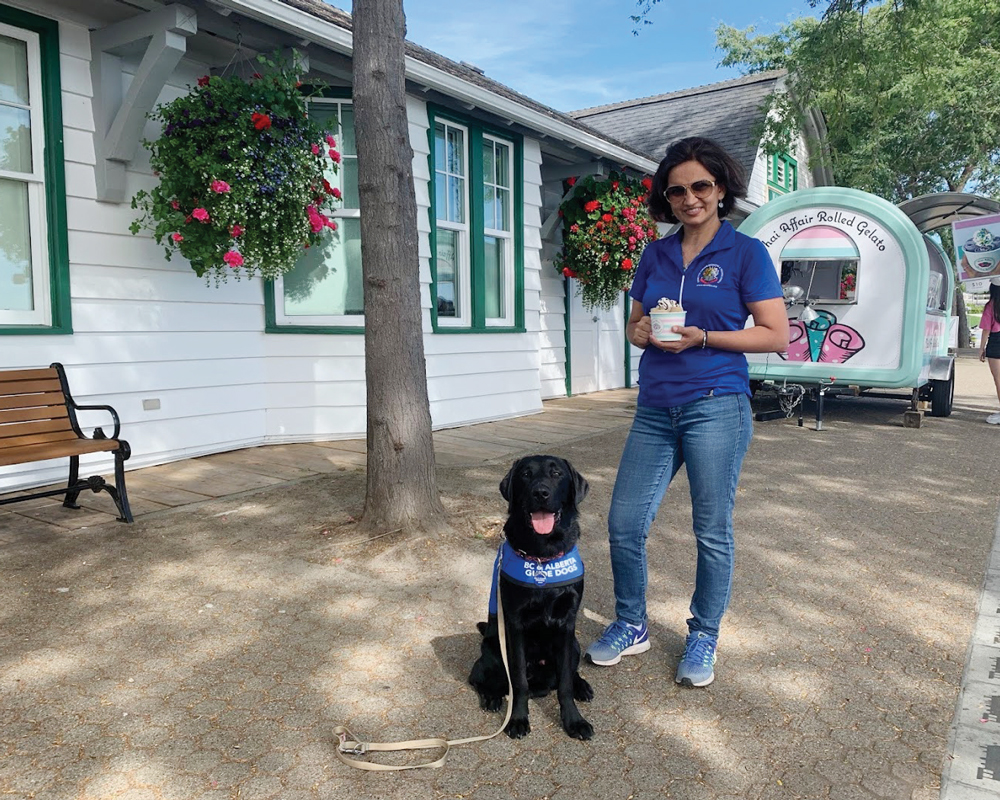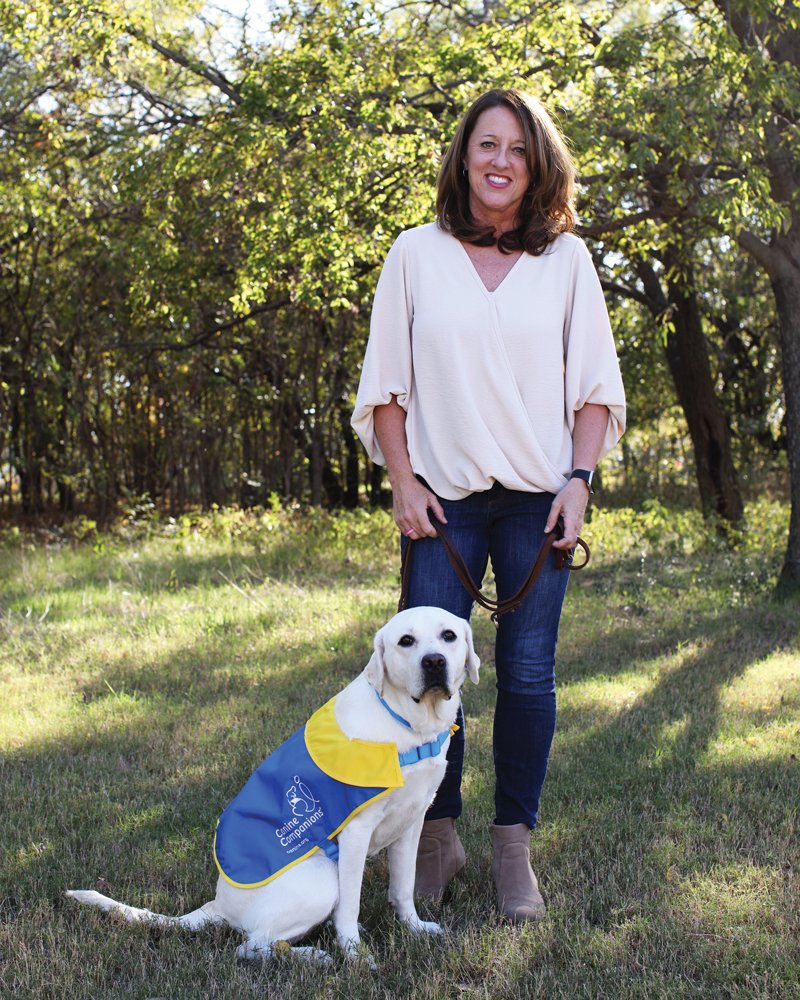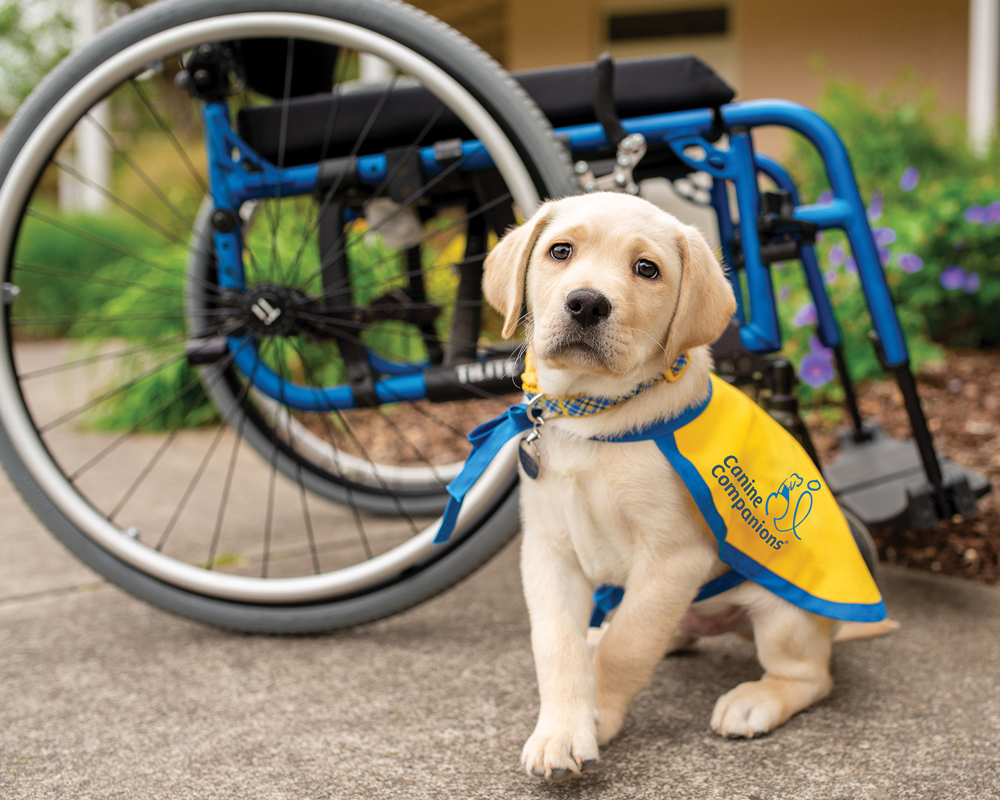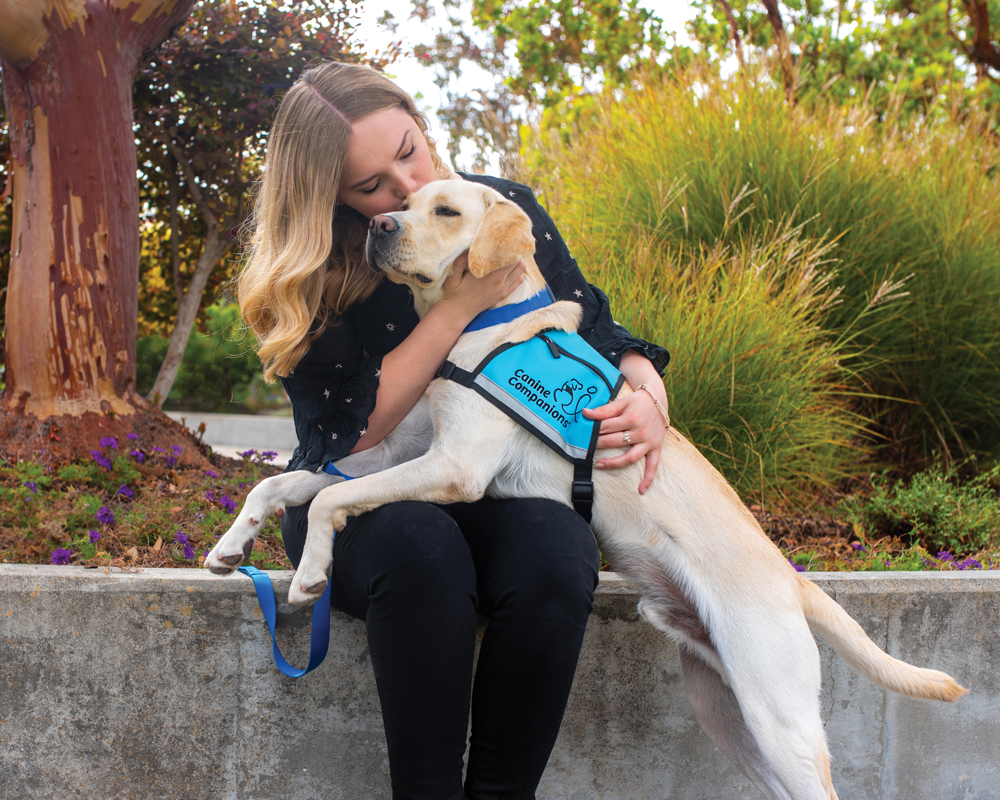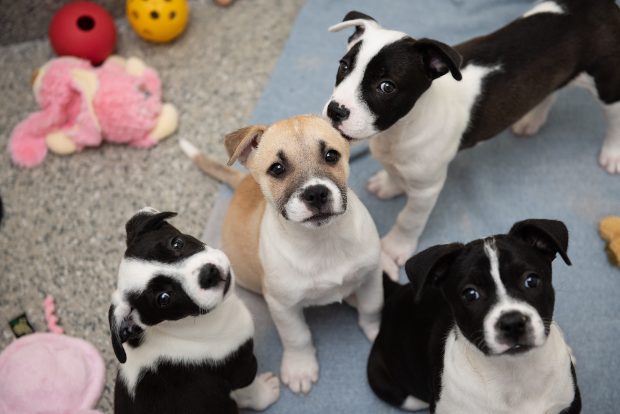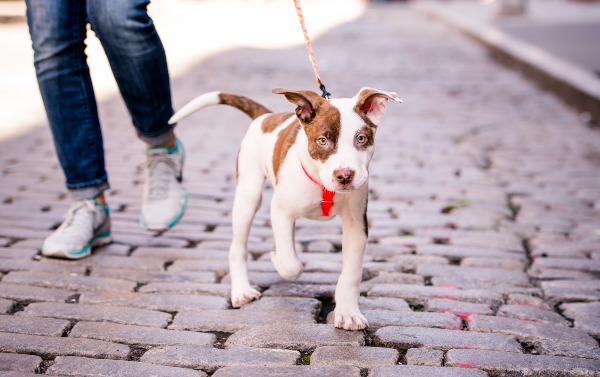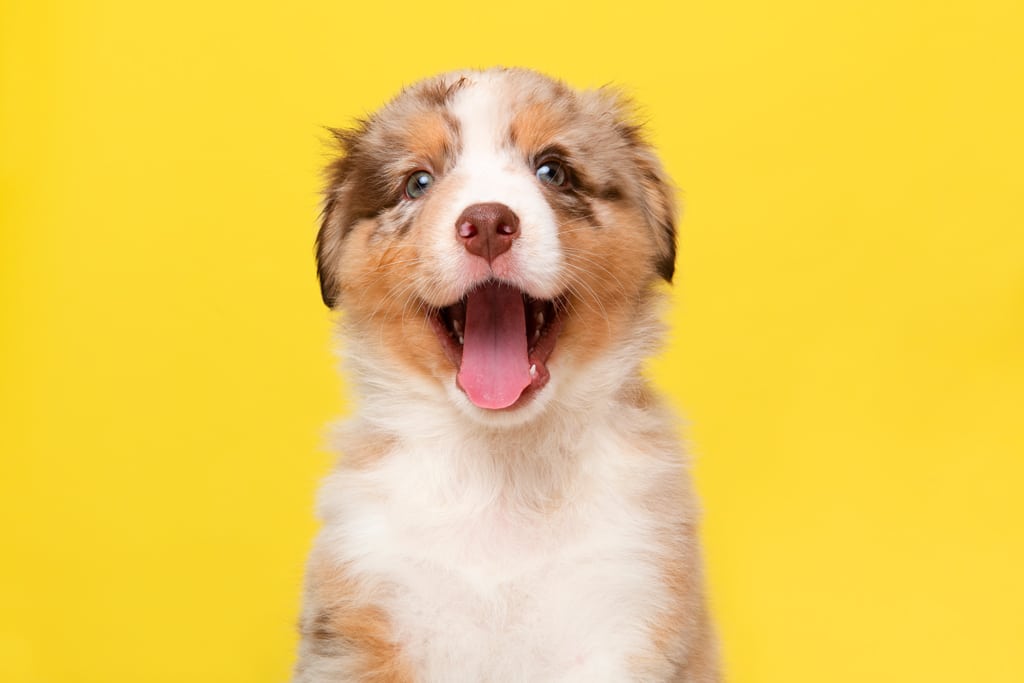- Dog CareDog LifeCommunity
- Photo Contest
Photo Contest- Giveaways
Nature vs. Nurture
It’s all in how you raise them… or is it? This phrase is often used to describe how any dog can be a safe, healthy, happy one with enough good nutrition, training, and love. If only it was true. Saying a dog is just the result of how he’s raised completely ignores a major component of his development—his genes. Yes, dogs are products of how they are raised. But they are also products of their genetics. Both nature and nurture play important roles in your dog’s development.
If you breed two purebred Golden Retrievers together, you’ll get Golden Retriever puppies. There won’t be a random Jack Russell or Pekinese in the mix. You can look at the parents and their grandparents and have a good guess at the puppies’ eventual size, colour, and build. Look at the genetic medical history, and you may see indications of likely cancers or hip issues. This is why good breeders do health testing on their dogs before they ever breed them to help prevent genetic health problems from reproducing in their lines. You can also get a good idea of temperament. If the parents and grandparents were sweet and easygoing, chances are the puppies will be as well. As retrievers, they likely will want to put everything in their mouths.
Border Collie puppies show herding instinct at a tender age. Pointer puppies will point. Think of genetics as the original lump of clay you start with to form a beautiful piece of pottery. How you shape the clay is the nurture aspect.
Your Dog’s Genetic Blueprint
Just as there are health issues that are genetic in nature, passed down from parents to puppies, so can there be temperament issues. In the 2019 study, Highly Heritable and Functionally Relevant Breed Differences in Dog Behaviour, published in the The Royal Society, researchers stated that a large proportion of behavioural variance across breeds was attributed to genetic factors. Trainability, stranger-directed aggression, chasing, and attachment and attention-seeking behaviour were the most common traits found within breeds.
We’ve developed dog breeds to perform specific jobs. It only makes sense that breeds designed to guard would lean towards stranger-directed aggression. Sporting and herding breeds that need to work with people would be highly trainable. Toy breeds meant to keep you company do not understand the concept of personal space and will follow you into the bathroom.
If you are looking for a canine family member to add to your home, consider his genetic blueprint. If you are looking at a mixed breed dog, what breeds are in there? For example, if you have young kids who like to run, a herding breed is likely to chase them.
To the best of your ability, try and meet a puppy’s parents. Are they friendly? Do they enjoy your interactions? If someone offers the excuse that the mother “is very protective of her puppies, so you can’t meet her,” this is a warning sign. Mom may be protective, but she also could be an aggressive dog who doesn’t like strangers any day. Not a great trait to pass down to her children.
When meeting a puppy, does he hide from you? Does he look worried? Does he snap or growl at you? Do not bring this puppy home. He is already exhibiting worrisome traits.
Shaping the Clay
The biggest impact you can have on a young puppy is properly socializing him before 12 weeks of age. This is the critical socialization period. Does he have all his shots yet? No.
If you wait until he has completed his vaccination series, typically around 16 weeks, it will be too late. Puppies make opinions during the first 12 weeks of their lives that they carry a lifetime. Starting too late can lead to fear and aggression problems in adolescence and adulthood.
The American Veterinary Society of Animal Behavior states that “…it should be the standard of care for puppies to receive such socialization before they are fully vaccinated.” You can safely socialize your not-yet fully vaccinated puppy by following these guidelines:
• Avoid taking your puppy where unvaccinated dogs may have been, such as dog parks or public parks.
• Do not let your puppy investigate another dog’s feces. Clean his paws with baby wipes after walks.
• Only let your puppy interact with dogs you know, who have been fully vaccinated.
Proper socialization is critical for any puppy, especially one who may be drawing from a poor genetic deck of cards.
You can start training your puppy the day you bring him home. Teach him family manners. Housetrain and confinement train him. Teach him what he is allowed to put his teeth on. Training him will help shape him into the family companion you want.
There will always be cases of dogs who had horrible starts in life through abuse or neglect who end up being wonderful companions. There are also cases of carefully bred dogs who go to loving families but still end up having serious behavioural issues. Nature and nurture make for a powerful mystery combination. While scientists work to unravel the implications, you can make the best of both.
Puppy Socialization Done Right
Proper socialization ensures your puppy has a wonderful time with each experience. Always have treats with you. Any time your puppy witnesses something potentially scary, generously give him treats. If he won’t take the treats, you may be too close to the scary thing for him to cope. Move farther away and try again. Always let your puppy make the choice to approach people or his environment. Reward him for being brave. Here are just a few things you can introduce him to:
Loud noises: vacuums, blender, hair dryers
Traffic: cars, trucks
Rolling objects: strollers, luggage, garbage bins, scooters, bicycles
People of different ages, genders, and ethnicities
Flooring: tile, carpet
Stairs
Animals: dogs, cats, birds, horses
Car rides (other than going to the veterinarian)
Your neighbourhood activities: lawn care, playing children, barking dogs
Icon Illustrations (from top to bottom) by: Digital Bazaar/bigstock.com; MacroOne/bigstock.com; Penti-Stock/bigstock.com; Digital Bazaar/bigstock.com; millering/bigstock.com; Line Arts/bigstock.com; Digital Bazaar/bigstock.com; Line Arts/bigstock.com; Digital Bazaar/bigstock.com.
This article originally appeared in the award-winning Modern Dog magazine. Subscribe today!
Volunteer Puppy Raisers
All remarkable individuals were once babies in need of upbringing—and that includes service dogs. Before going on to guide the visually impaired, alert to impending seizures, or help veterans with crippling PTSD, service dogs need someone to raise them from wriggling balls of fur to competent dogs ready for school. Before they enter their formal training program at one-and-a-half to two years old (they’ll receive up to two years of highly specialized training to meet the needs of the owner they will serve), future service dogs are often brought up by volunteer puppy raisers. Most of us can't imagine doing everything it takes to raise a puppy, forming an emotional attachment, then giving up the pup just as it is turning into the perfect dog. But according to the people who volunteer for this important task, raising a service dog puppy is more than worth it—it might even be addictive.
On average, the puppies spend 18 to 24 months with their volunteer raisers, starting at about eight weeks of age. Depending on the organization, the volunteers may be responsible for covering the expenses for the puppy while with them. There are detailed training protocols that must be followed, which can make the challenging task of raising a puppy even more demanding than usual. Yet despite all that, most puppy raisers would tell you it’s more than worth it, and many do it again and again.
Ashley Wilt and PhilAshley Wilt, 22, is a “serial” puppy raiser who volunteers with the U.S.-based non-profit Canine Companions. She began puppy raising when she was in high school, having convinced her parents to jump into the adventure with her. As she recalls, "I loved dogs, and putting that passion towards a project that had the chance to provide independence for someone seemed like a wonderful opportunity.” Wilt is now raising her sixth puppy and has become even more devoted to the cause. "The feeling of seeing lives changed and experiencing all the good these dogs do is truly addicting,” she says. “I don't see myself hanging up the leash anytime soon!”
Joanne Simpson and her husband Jay shared Wilt's motivation to help others, but they also realized that a puppy could bring something special to their lives. "We were at a point where we wanted something more, and we saw an ad in the paper for BCAGD (Canada-based non-profit BC & Alberta Guide Dogs) needing puppy raisers,” says 53-year-old Simpson. “We thought it would give us what we were missing—a chance to help our community and have something to share our love with at the same time.” It certainly did both of those things, so much so that the Simpsons are raising puppy 13 right now.
Jessie and Sehaj Hundal only recently made the decision to co-raise their first puppy, a black Labrador puppy named Westy with BCAGD. For them, it was a way to support the interest their eldest daughter showed in entering the veterinary science field, but as it turns out, the entire family is benefiting from the experience. “Westy has been a bundle of joy for all of us from day one,” says Jessie Hundal. “He’s also changed our lives tremendously by enforcing a healthy routine,” says Hundal. The family takes him outdoors twice a day, plus there are additional activities over the weekend, exploring of the city's hiking trails, parks, malls, and taking public transit. “The kids spend lots of time playing and bonding with Westy, and we all enjoy his unconditional love, endless cuddles, and companionship,” she says.
Jessie Hundal and Westy / Photo Jessie & Sehaj HundalBut raising a service dog puppy isn't all cuddles and games, as the Hundals have discovered. "Raising a service dog has a rigorous training schedule and requires a very disciplined approach," explains Hundal. She finds that the repetitive nature of the training can be exhausting and frustrating at times but understands that it is necessary in order to teach all the commands the puppy needs to know. And, adds Hundal, “You have to abide by certain rules and regulations, especially regarding play time, which can be quite contrary to normal dog play routines. For instance, the BCAGD handbook states: We do not want the pup to chase a ball, frisbee or stick. These are things that are seen regularly out in parks and we do not want to have our dogs distracted by them. They can also become obsessed by chasing these, which is an undesirable behaviour." The pups are hardly deprived of play, though. They get to play “fetch with rules” with other kinds of toys, as well as tug-of-war games, and their raisers are encouraged to regularly take them off leash.
Gayla Cruikshank and OrindaThere are also some special perks to raising a future service dog. One is being able to take the puppies just about anywhere. Gayla Cruikshank, another Canine Companions volunteer, says, "It's really great being able to take the puppies to so many different places. I especially love bringing the pups to speaking engagements to introduce them and show off their skills. I also love bringing them to stores and watching them be super obedient and well-behaved."
The feeling of seeing lives changed and experiencing all the good these dogs do is truly addicting.
The Hundals are also greatly enjoying this aspect of having a service dog puppy. "It's a lot of fun exposing Westy to different places and situations," says Hundal, "which gives us the opportunity to practice things he will need to know in the future. He's been to the shopping mall, where he learned about using elevators and escalators, and to several restaurants, where we have worked on maintaining a down and stay. He's also visited a dental office and has accompanied me to my office at the University of British Columbia campus. You can take him anywhere indoors with his jacket that reads ‘Puppy In Training – BCAGD’."
The flip side to that is that you may find yourself rather red in the face when you are out in public representing an agency and your dog decides to misbehave—which, being puppies, they undoubtedly will. "We've had incidences where a puppy went pee or pooped in the mall, and one who would just flop over and refuse to walk when he didn't want to leave a place," recalls Simpson. And then there was the incident when Simpson and her husband were in a restaurant with the puppy tucked under the table, and the waitress came up to take their order. "She didn't know we had a dog with us," recalls Simpson, "and while she was taking the order, she felt something move up her leg. The woman shot poor Jay a dirty look before she realized the dog was there and had sniffed its way up her skirt! Good thing the pup was cute."
Puppy PhilOf course, putting so much time and effort into these cute puppies inevitably leads their temporary caregivers to become attached to them, which can make it hard to give them up when the time comes. As Wilt explains, "Sending the puppy off to the next step in their journey is definitely the most difficult part for me. Even though you go into the experience expecting it, it is still difficult to imagine until it is happening. I just try to keep in mind that while I am saying goodbye to this puppy, someone else is out there waiting for the day that they get to bring their new service dog home. The magic of their union can’t happen unless I say my goodbye. I've also found that the best way to cope while missing your previous puppy is to throw yourself into raising another!"
Simpson relates to these feelings, saying, "You always get emotionally attached—you can't help it—which means it is always heart-wrenching to say goodbye. You have thoughts of running away with the dog and changing your address so they won’t find you." Still, she tries to keep her heart in check to some degree. "When you raise these dogs," she says, "it is helpful to remember they do not belong to you. You have been given these dogs to get them started on a wonderful journey, and there is such satisfaction in seeing how they change the life of others. And when they leave and you go through empty nest syndrome, you just have to do it all over again!"
The Hundals haven't had to say goodbye to Westy yet, but they are trying to keep the purpose of having him in the forefront of their minds. As Simpson says, "We went into the program with a very clear intention to raise a service dog and fulfill the duties and responsibilities that came along with that. Our main goal is to provide him with all that he needs to be successful in becoming a service dog." When asked how they think they will feel when the time comes for their first service dog puppy to move on, Hundal says, "It will be incredibly tough to say goodbye to Westy, but we’ve made many great memories together. And we will be cheering him on all the way from the sidelines."
Ashley Wilt and PhilIndeed, getting to cheer on the dogs they have raised once they “graduate” from formal training and are matched with the people they will serve is one of the greatest rewards of this kind of volunteerism. While Covid has restricted in-person graduations, Cruikshank fondly remembers seeing her pup, Orinda, on the video she received from Canine Companions. "When I watched the video of the matching process," says Cruikshank, "I lost it. I was so happy and full of emotion, knowing she had reached the pinnacle of what we worked so hard for. I just cried and cried happy tears. Then we had a Skype video introduction with her new family, and I eventually got to meet them in person this year. It was so fantastic to see her doing everything she was meant to do, but I have to admit that I was also pleased that when Orinda saw me, she remembered me!"
All of the volunteers we spoke to enthusiastically recommend the experience to those considering doing it. As Simpson states, “It’s a lifetime opportunity to make a difference in someone’s life.”
From Precious Puppy to Aggravating Adolescent
They’re fluffy, floppy and adorable. Their tiny toes are tender, pink and perfect. Even their breath smells magical. Seriously, what’s not to love about puppies?
As irresistible as they are, puppies do grow up quickly, and they need our help growing into equally lovable adult dogs. Since March 23 is National Puppy Day, what better time to talk about the importance of training and socializing all those pandemic pups?
We know that more than a million pets have been adopted from shelters and rescue groups in the year since the start of the pandemic. But additionally, an untold number of puppies have been purchased since last March, which could spell trouble for first time pup parents. According to the American Pet Products Association’s COVID pulse surveys, as of the end of 2020, 10% of respondents indicated they had gotten a new pet as a result of the pandemic, representing more than 12 million households. While the data is not separated by species, even after subtracting the adult dogs, cats and kittens, there is inevitably a huge number of new puppies in homes in the last year.
Many shelter pets tend to be past the puppy stage, and generally come with some support from the shelter, informally in the form of advice, or formally by way of obedience classes. Puppies purchased from pet stores or online retailers, and even some breeders, are often only weeks old, most barely weaned, and usually do not come with any follow up support, leaving pet parents on their own in terms of training.
So now that months have passed, those sweet little fuzzy fellows are turning into dog-sized critters with adolescent behaviors. Dogs need training and socialization to learn how to be healthy and happy members of the family, and that responsibility falls on owners. Without an investment in training, dogs can grow up to be wild, unruly pets with no manners, and families often feel exasperated by them at this stage because training a full-grown puppy who jumps on everyone, scratches and is mouthy, may feel like too much trouble.
To help keep dogs who were once small and adorable, but are now larger and less manageable out of shelters, new pet owners should take advantage of this time to find creative ways to ensure their pups get the training and socialization they need, even amid the pandemic.
Dog training may look different during COVID, but there are still plenty of options out there. Puppy parents can register their pets in private or socially-distanced group obedience classes, or find trainers offering courses on Zoom. Best Friends Animal Society has a variety of dog training videos online, from clicker and crate training, to puppy socialization, basic obedience, and working through leash-reactivity. Getting dogs and puppies out to socialize, to facilitate exposure to other dogs and to safely meet new people, can be accomplished with a long leash on walks or at dog parks.
Marissa Sunny, CPDT-KA and senior dog lifesaving specialist at Best Friends Animal Society offers some advice to new pup parents:
“Whether you purchased a puppy from a breeder or adopted a puppy from your local shelter or rescue group it is incredibly important to start training right away. While some behaviors may seem cute when the puppy is small, like jumping up to greet you or mouthing on your fingers, these behaviors can quickly become unmanageable in an adult dog. Dogs are extremely smart–smarter than we give them credit for most of the time –because of this they will likely train you faster than you can train them, so it’s best to get started right away.”
As Sunny pointed out, dogs have no internal moral compass; they actually don’t know when they did something wrong unless you teach them otherwise. “Dogs view things in two categories –safe or dangerous, not good or bad. When your puppy becomes a teenager, and then an adult, they will continue the same ‘cute’ behaviors they started in puppyhood, but it is very different when it is an 80 lb. dog jumping on your elderly mother or mouthing your kids’ fingers,” she said.
Sunny offered an example what happens when a dog grows up without training by way of a dog named Treat, who came to the Best Friends Lifesaving Center in Los Angeles recently.
“Treat is an absolute sweetheart, but he had no idea how big he was. He would incessantly jump up on staff members and volunteers as well as hard mouth on anyone or anything that gave him a chance. We don’t know exactly how or why he ended up at the city shelter, but I suspect this behavior had something to do with it,” she said. “He was a young adult shepherd mix with a lot of energy to burn and nowhere productive to channel it. After working on relaxation protocol, basic training, and letting him work off his energy in the yard and playing with other dogs he found his forever family with a young family and another juvenile shepherd as a brother.”
Most people are still home more than usual, and it’s important to spend time working with pets now, while also preparing them for more alone time, as people eventually go back to work, school and traveling.
An investment now in training and socialization will pay off in the form of improved communication and expectations between pets and people, and a better-behaved, well-mannered pet who is a happier, healthier member of the family.
New puppy? Check out our 11 steps for raising the perfect puppy here!
Dogify Your Inbox
Sign up for the FREE Modern Dog Magazine newsletter & get the best of Modern Dog delivered to your inbox.
"*" indicates required fields
By clicking the arrow, you agree to our web Terms of Use and Privacy & Cookie Policy. Easy unsubscribe links are provided in every email.
